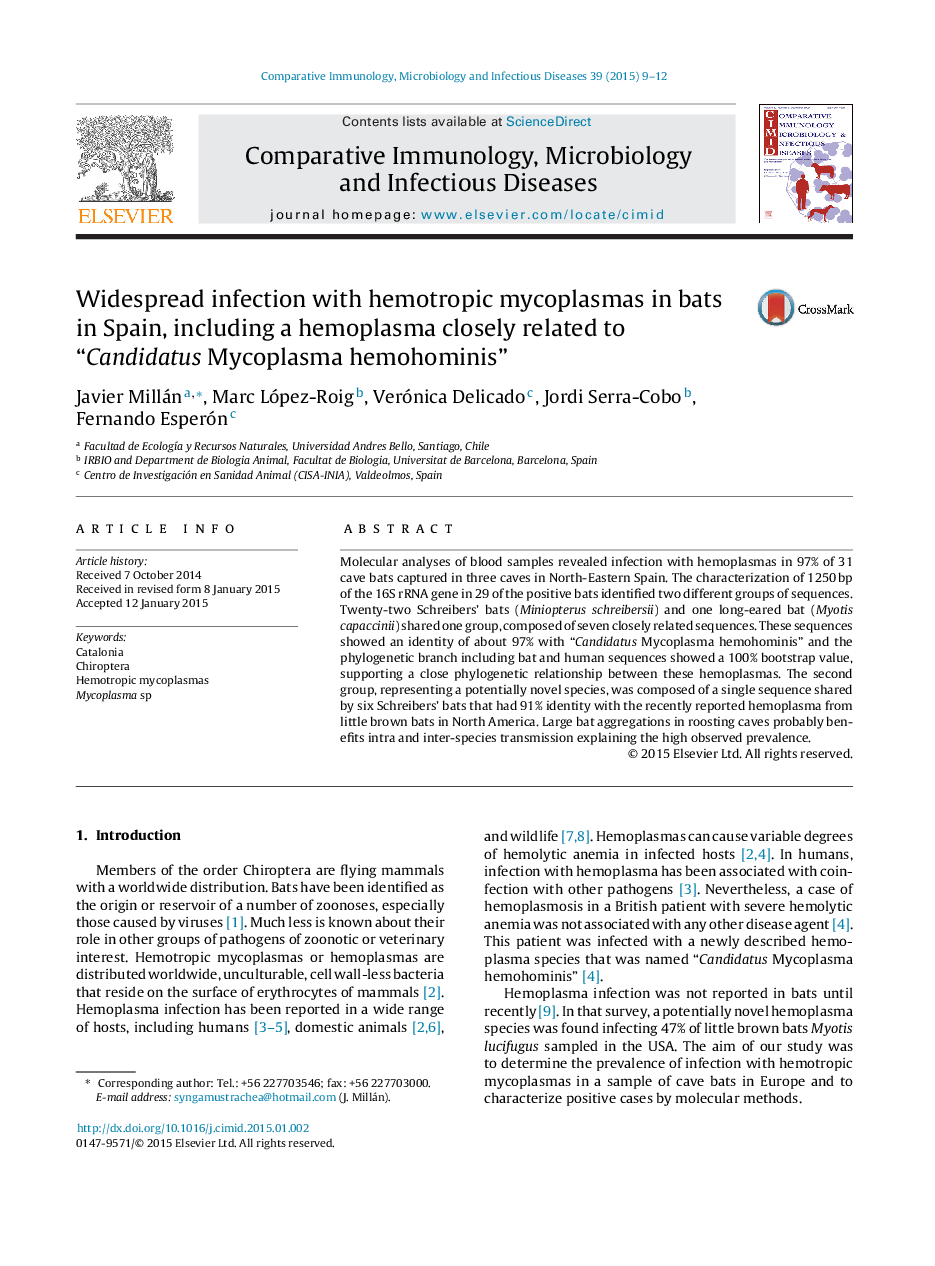| Article ID | Journal | Published Year | Pages | File Type |
|---|---|---|---|---|
| 2428213 | Comparative Immunology, Microbiology and Infectious Diseases | 2015 | 4 Pages |
•Two clades of hemoplasmas infected 97% of 31 bats captured in three caves in Spain.•One clade was 97% similar to the human pathogen Candidatus Mycoplasma hemohominis.•The only case of a human infected with CMh may be a result of spillover from bats.•The second clade had 90.6% identity with a Mycoplasma sp. from bats in the USA.•This clade represents a potentially novel hemoplasma species.
Molecular analyses of blood samples revealed infection with hemoplasmas in 97% of 31 cave bats captured in three caves in North-Eastern Spain. The characterization of 1250 bp of the 16S rRNA gene in 29 of the positive bats identified two different groups of sequences. Twenty-two Schreibers’ bats (Miniopterus schreibersii) and one long-eared bat (Myotis capaccinii) shared one group, composed of seven closely related sequences. These sequences showed an identity of about 97% with “Candidatus Mycoplasma hemohominis” and the phylogenetic branch including bat and human sequences showed a 100% bootstrap value, supporting a close phylogenetic relationship between these hemoplasmas. The second group, representing a potentially novel species, was composed of a single sequence shared by six Schreibers’ bats that had 91% identity with the recently reported hemoplasma from little brown bats in North America. Large bat aggregations in roosting caves probably benefits intra and inter-species transmission explaining the high observed prevalence.
